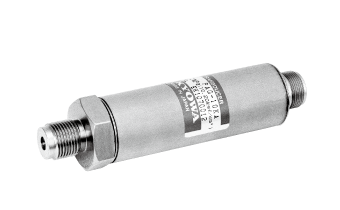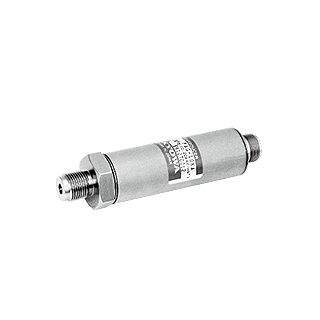PAG-A – with load-stable amplifier, 4..20mA
(200 kPa)
Order on request
These products are requested only from ZSE. Our employees will contact you as soon as possible with an offer.
Order on request
This product is ordered on request!
An account at myZSE gives you the opportunity to order this product directly.
The PAG-A series pressure transducers are stable and their sensor part is designed to be highly stable. Inert gas is hermetically sealed in the sensing part, ensuring excellent reliability and stability for long-term. The built-in amplifier is composed of highly-selected reliable components and be fully tuned to provide high-frequency radio noise resistance. Therefore, PAG-A series achieves reliable, stable, and high noise resistant measurements.
Features
- High reliability
- High resolution
- Strong against noise
Specifications
Performance
- Nonlinearity
-
±0.1
% RO
- Hysteresis
-
±0.2
% RO
- Current Output
-
4 –
20
mA
Environmental Characteristics
- Safe Temperature Range
-
-20 –
75
°C
- Compensated Temperature Range
-
-20 –
70
°C
- Temperature Effect on Zero
-
±0.03
% RO/ºC
- Temperature Effect on Output
-
±0.01
%/°C
- Zero Stability
-
±0.5
% RO/ºC
Electrical Characteristics
- S/N Ratio
-
60
dBI
- Load Resistance
-
0 –
500
Ω
- Cutoff Frequencies of AMP
-
650
HzI
- Power Supply
-
24 VDC (21 to 30 V), 30 mA or less
- Cable
-
4-conductor (0.3 mm2) chloroprene shielded cable, 7.6 mm diameter by 5 m long;
Sensor side: Terminated with a waterproof connector plug 1108-12A10-7F;
Measuring instrument side: Bared at the tip (Use 3 conductors only.);
(Shield wire is not connected to the case.)
Mechanical Properties
- Safe Overloads
-
150
%
- material
-
Case: SUS (Metallic finish)
Liquid-contacting part: SUS 630
- Weight
-
270
-
-
-
1
PAG-2KA
200
200 kPa
Request
S
Kyowa Electronic Instruments
KYOWA ELECTRONIC INSTRUMENTS CO, LTD. is a Japanese company that has been covering all core elements of industrial strain measurement technology since 1951.




